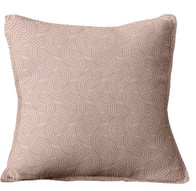Embracing the Holidays: Creating Cozy Spaces for Joy and Relaxation
- Erica Swanson

- Dec 3, 2024
- 4 min read

The holiday season is a beautiful time for joy, celebration, and togetherness, but it can also bring about stress and anxiety for many. As we navigate the hustle of shopping and the pressures of hosting, it’s essential to find ways to create cozy, calming spaces in our homes. By fostering environments that promote relaxation, we can help both kids and adults embrace the magic of the season. While the demands of holiday planning can feel overwhelming, there are uplifting strategies to transform chaos into comfort, allowing everyone to truly savor this special time of year.
To further support families facing challenges like anxiety, OCD, and sensory processing sensitivities during the holidays, I’ve conducted interviews with parents who share their insights and experiences. From thoughtful organization to more extensive updates, these design tips aim to create spaces that encourage decompression and relaxation. Whether it’s a cozy nook filled with comforting items or a sensory-friendly zone for unwinding, these ideas can make a significant difference in helping families navigate the season with greater ease and joy.
How Can Design Reduce Stress: The Power of Cozy Spaces

The design of our environment significantly impacts our mood, influencing whether we feel relaxed or stimulated. While it’s essential for our homes to serve as sanctuaries for rest and rejuvenation, having stimulating areas is equally important. Creating multiple cozy corners allows children, in particular, to retreat and regain their calm when feeling overwhelmed.
Here are some tips for designing spaces that invite relaxation and comfort, especially for those who experience anxiety or heightened sensitivity to their surroundings.

Warm Lighting: Swap out harsh overhead lights for softer, warmer options. Use fairy lights, lamps, or candles (electric ones for safety!) to create a soothing ambiance. Dimmable lighting can help signal relaxation and calmness, making it easier to unwind.
Comfortable Textiles: Invest in soft blankets, plush cushions, and weighted blankets. Weighted blankets, in particular, can provide a sense of security and comfort for children dealing with anxiety. Layering different textures not only adds visual interest but also creates a physical sense of warmth.
Designated Calm Corners
Create a specific “calm corner” or cozy nook in your home where kids can retreat when they feel overwhelmed. Many parents recommend having one calming corner on each level of the house. Here are some ideas to help you set up these soothing spaces:

Safe and Enclosed: Choose a space that is at least partially enclosed, like a child’s play tent or a cozy area with cushions and mats. This provides a sense of security.
Comforting Furnishings: Include a bean bag chair, calming toys, and sensory items such as stress balls or fidget spinners to help kids relax.
Personalization: Encourage children to personalize their space with items that soothe them, like favorite books or stuffed animals. Involving them in the decorating process fosters a sense of ownership and control, which is especially beneficial for those with anxiety.
Clutter Control: Keep the area clean and organized to promote calmness. Ensure everything has a designated place, and consider rotating toys and activities to prevent the space from becoming overwhelming.

Embrace your Senses: Scents can have a profound effect on our mood. Use essential oils known for their calming properties, such as lavender or chamomile, in a diffuser or as scented sachets in their cozy space. Just be mindful of any sensitivities your child might have. You can also use noise-canceling headphones to relax and down out background noise or listen to calming music or sounds from nature.
Patterns: Too many patterns, especially in a small space, is overstimulating. It is best to choose 1 pattern and then mix in coordinating colors. Choose patterns that are flowy and organic or opt for parallel lines all of which are seen in nature. Avoid spots and dots and high contrast patterns as those are stimulating.

Nature Elements: Incorporating plants or natural elements can enhance your space. Consider adding small, easy-care plants like succulents or evergreen branches to provide a calming connection to nature. Nature can help reduce stress levels and foster a sense of tranquility.
*** All of these techniques can be adjusted for any age. For adults, replace stuffed animals and fidgets with a mindless activity that you enjoy. Maybe a puzzle, audiobook, drawing and sketching, or journaling.
Mindful Moments

Once you’ve created your cozy sanctuary, make time to enjoy it with mindful practices. Schedule regular moments for you and your kids to retreat there for activities like reading or drawing, fostering grounding and relaxation. Use the space to reflect on gratitude by keeping a journal nearby for the family to share joyful thoughts. Incorporate simple mindfulness and breathing exercises to help everyone manage stress and anxiety, transforming your cozy area into a haven of peace and positivity.
Regeneration Through Relaxation

The holidays can be a time for both reflection and regeneration. By creating cozy spaces in your home, you’re not just making comfortable areas; you’re building refuges that nurture the well-being of everyone, especially children who struggle with overstimulation. As you prioritize relaxation, you’ll find it easier to manage holiday stress.
Embrace the season, savor the small moments, and remember that it’s okay to take a step back. Your cozy space is waiting—make it a haven where you and your children can recharge, reflect, and enjoy all the beauty the holidays have to offer.

Wishing you a peaceful and joyful holiday season!














Comments